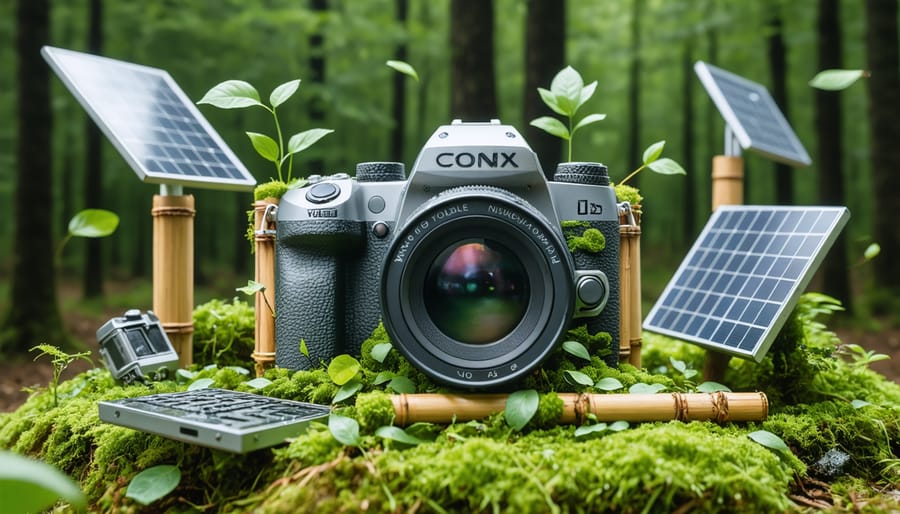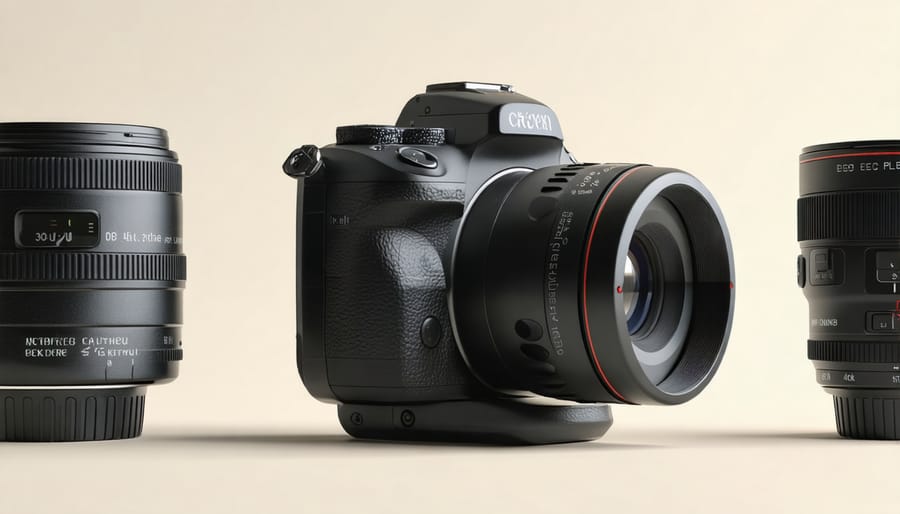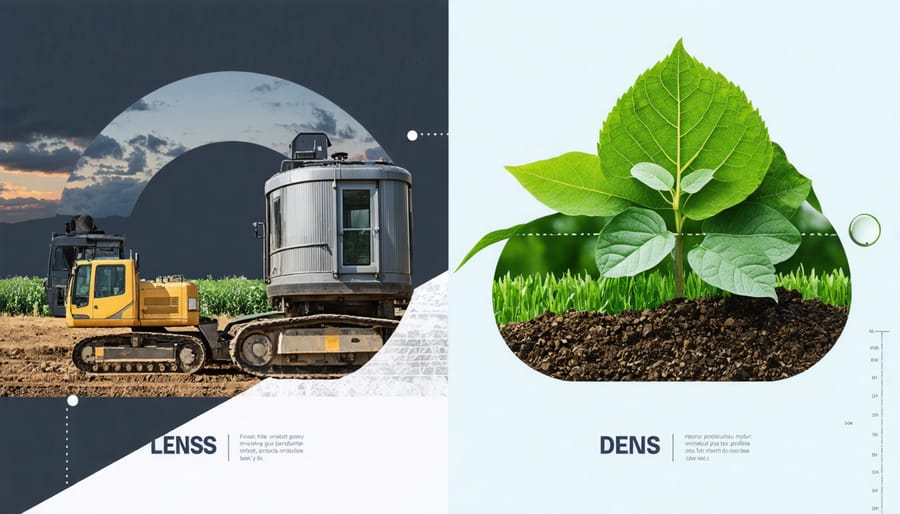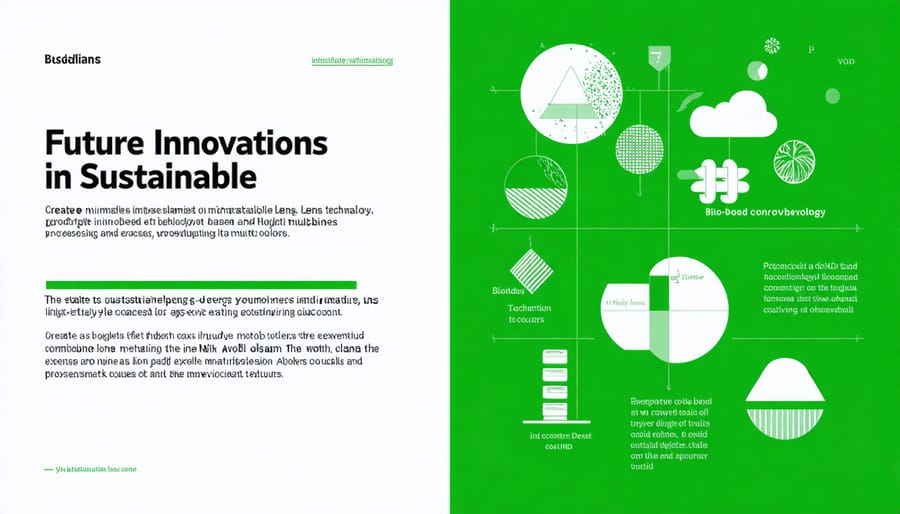
In today’s climate-conscious world, choosing eco-conscious photography equipment has become a crucial consideration for photographers committed to environmental stewardship. The term “eco-conscious” in photography extends beyond mere marketing—it encompasses the entire lifecycle of photographic equipment, from sustainable manufacturing processes to biodegradable packaging and responsible end-of-life disposal options. Modern eco-friendly lenses incorporate recycled materials, lead-free glass elements, and energy-efficient coating technologies that minimize environmental impact without compromising optical performance. These innovations represent a significant shift in how manufacturers approach lens design and production, offering photographers powerful tools to create stunning images while reducing their carbon footprint. Understanding this evolution in photography equipment helps professionals and enthusiasts make informed decisions that align with both their creative vision and environmental values.
What Makes a Lens Eco-Conscious?
Sustainable Materials and Manufacturing
In the realm of eco-conscious photography equipment, sustainable materials and manufacturing processes play a crucial role in reducing environmental impact. Modern lens manufacturers are increasingly adopting recycled aluminum and eco-friendly glass components, significantly lowering their carbon footprint. These materials not only meet high optical standards but also ensure durability while being environmentally responsible.
Leading manufacturers have implemented closed-loop production systems, where waste materials are recycled back into the manufacturing process. For instance, metal shavings from lens barrel production are collected, cleaned, and reused, while specialized coating processes now use fewer harmful chemicals and solvents.
Water conservation in lens manufacturing has become a priority, with many facilities implementing advanced filtration and recycling systems. Energy efficiency has also improved through the use of solar power and smart factory technologies that optimize production schedules and reduce power consumption during non-peak hours.
Packaging has evolved too, with manufacturers moving away from traditional plastic materials in favor of biodegradable alternatives and recycled cardboard. Some companies now use soy-based inks for printing and have eliminated synthetic foam padding, replacing it with recyclable paper-based materials.
These sustainable manufacturing practices not only benefit the environment but often result in superior product quality, as careful material selection and precise production processes are essential for both sustainability and optical excellence.
Packaging and Shipping Considerations
Sustainable packaging has become a crucial consideration in the photography industry’s move toward eco-consciousness. Leading manufacturers are now adopting minimalist packaging designs that eliminate plastic components and utilize recycled or biodegradable materials. For instance, some brands have replaced traditional plastic lens cases with cases made from recycled aluminum or sustainable bamboo fiber.
Distribution strategies have also evolved to reduce environmental impact. Many companies now employ consolidated shipping methods, combining multiple orders into single deliveries to minimize transportation emissions. Some manufacturers have established regional distribution centers, significantly reducing the distance products need to travel to reach customers.
The shift extends to protective materials as well. Instead of conventional foam inserts and bubble wrap, eco-conscious brands use innovative alternatives like mushroom-based packaging materials and recycled paper cushioning. These materials provide excellent protection while being fully biodegradable or recyclable.
Smart packaging design has also helped reduce overall package size and weight, allowing more products to be transported in fewer shipments. QR codes are increasingly replacing printed manuals, further reducing paper usage and package bulk. Some manufacturers even encourage customers to return packaging materials for reuse, creating a closed-loop system that minimizes waste.
These initiatives not only benefit the environment but often result in cost savings that can be passed on to photographers, making eco-conscious choices more accessible to everyone.

Environmental Impact of Traditional Lens Production
Traditional lens manufacturing processes have long been a source of significant environmental concern within the photography industry. The production of conventional camera lenses typically involves energy-intensive processes, hazardous materials, and substantial waste generation that can leave a considerable ecological footprint.
The creation of optical glass, a fundamental component of camera lenses, requires extremely high temperatures – often exceeding 1,500°C (2,732°F) – which consumes massive amounts of energy and results in substantial CO2 emissions. Additionally, the grinding and polishing processes used in sustainable lens production traditionally rely on rare earth elements and chemical compounds that can be harmful to both workers and the environment if not properly managed.
Consider these sobering statistics: manufacturing a single professional-grade lens can generate up to 80 pounds of waste materials, including glass particles, polishing compounds, and packaging materials. The coating process, which gives lenses their anti-reflective properties, often involves the use of volatile organic compounds (VOCs) that contribute to air pollution and pose potential health risks.
The use of lead-based glass, while declining, remains present in some manufacturing processes, creating additional environmental and health concerns. Traditional lens production also typically requires significant water usage for cooling and cleaning processes, with some facilities using thousands of gallons daily.
Moreover, the transportation of raw materials and finished products across global supply chains adds to the carbon footprint of conventional lens manufacturing. Many components are sourced from different continents, requiring extensive shipping networks that contribute to greenhouse gas emissions.
However, awareness of these environmental impacts has led to innovative solutions in recent years. Manufacturers are increasingly adopting water recycling systems, energy-efficient equipment, and less toxic materials in their production processes. Some companies have begun implementing closed-loop manufacturing systems that minimize waste and maximize resource efficiency, pointing toward a more sustainable future for the industry.

Leading Manufacturers in Eco-Conscious Lens Design
Current Market Options
Today’s market offers several eco-conscious lens options from leading eco-friendly manufacturers. Sigma’s Contemporary line features lenses with reduced packaging and recyclable materials, while Tamron’s eco-series emphasizes durability and repair-friendly design. These lenses often come in plastic-free packaging and utilize recycled materials in their construction.
Notable examples include the Sigma 28-70mm f/2.8 Contemporary, which uses biodegradable packaging materials and features a compact design that reduces material usage. Tamron’s 35-150mm f/2-2.8 incorporates recycled metals in its construction and comes with a reusable lens case instead of disposable packaging.
Some manufacturers are also introducing modular designs that allow for easier repairs and component replacements, extending the lens’s lifespan. These features typically include replaceable front elements, serviceable aperture units, and simplified internal structures that reduce the need for complete lens replacement when damage occurs.
While eco-conscious options currently represent a small portion of the market, their availability is steadily increasing as photographers demand more sustainable choices.
Future Innovations
The future of eco-conscious lens manufacturing looks incredibly promising, with several groundbreaking innovations on the horizon. Researchers are currently developing bio-based optical materials that could potentially replace traditional glass and plastic elements. These sustainable alternatives are derived from renewable resources and maintain professional-grade optical quality while significantly reducing environmental impact.
Major manufacturers are also exploring advanced recycling technologies that can separate and purify lens components with unprecedented precision. This breakthrough could make it possible to reuse high-quality optical elements from old lenses in new products, creating a true circular economy in photography equipment.
Another exciting development is the emergence of carbon-neutral manufacturing facilities powered entirely by renewable energy. These facilities are implementing AI-driven production processes that minimize waste and optimize resource usage. Some companies are even experimenting with biodegradable lens caps and packaging materials made from mushroom-based compounds.
Perhaps most intriguingly, several startups are working on “smart” eco-conscious lenses that can automatically adjust their optical properties, potentially reducing the need for multiple lenses and decreasing overall resource consumption. These innovations suggest a future where high-performance photography and environmental responsibility go hand in hand.

Making the Switch: Practical Considerations
Making the transition to eco-conscious lenses doesn’t mean sacrificing the quality of your photography. By following a few practical guidelines and incorporating sustainable photography practices, you can maintain professional standards while reducing your environmental impact.
Start by assessing your current lens collection. Instead of immediately replacing everything, identify which lenses you use most frequently and consider upgrading these first. Look for manufacturers who use recycled materials in their lens construction and minimal packaging. Many leading brands now offer eco-friendly alternatives that match or exceed the performance of traditional lenses.
When selecting new eco-conscious lenses, pay attention to durability factors. A well-built lens that lasts longer ultimately creates less waste. Look for weather-sealing features, robust construction, and reliable warranty coverage. These characteristics not only protect your investment but also reduce the need for frequent replacements.
Consider adapting older manual lenses for your digital camera. With the right adapter, vintage lenses can produce excellent results while giving these perfectly good optics a second life. This approach not only reduces waste but often provides unique creative possibilities and character to your images.
Storage and maintenance play crucial roles in extending lens life. Invest in proper cleaning tools, UV filters, and protective cases. Store your lenses in a controlled environment away from extreme temperatures and humidity. Regular maintenance helps prevent deterioration and ensures optimal performance throughout the lens’s lifetime.
Remember that transitioning to eco-conscious equipment is a gradual process. Start with one or two key pieces and expand your collection thoughtfully. Many photographers find that this measured approach leads to more intentional purchasing decisions and a deeper appreciation for their gear.
When possible, buy from manufacturers who offer repair services and replacement parts. This support system ensures that minor issues don’t lead to complete lens replacement, further reducing waste in the photography industry. Some companies even offer trade-in programs, ensuring old lenses are properly recycled or refurbished.
As we’ve explored throughout this article, eco-conscious lens choices represent more than just a trend in photography – they’re a vital step toward a more sustainable future for our craft. By choosing environmentally friendly lenses, photographers can significantly reduce their environmental impact while maintaining professional standards and creative excellence.
The shift toward eco-conscious photography equipment reflects a broader understanding of our responsibility to the planet. From recycled materials and sustainable manufacturing processes to longer-lasting builds and repairability, these choices ripple through the entire photography ecosystem. Every eco-friendly lens purchase sends a clear message to manufacturers about the importance of sustainable practices.
Remember that becoming an eco-conscious photographer doesn’t require an immediate overhaul of your entire kit. Start with informed decisions when upgrading or replacing equipment, considering factors like durability, repairability, and the manufacturer’s environmental commitment. Even small steps, like choosing lenses with sustainable packaging or supporting companies with strong environmental policies, contribute to positive change.
Looking ahead, the future of photography lies in balancing exceptional image quality with environmental responsibility. As more photographers embrace eco-conscious choices, we’re not just preserving memories – we’re helping preserve the very landscapes and environments we love to photograph. Let’s continue to push for innovation in sustainable lens design while maintaining the high standards that define professional photography.






















